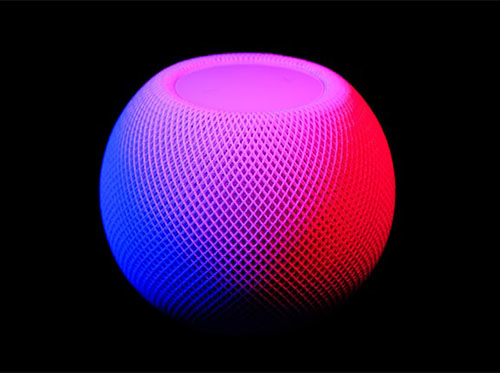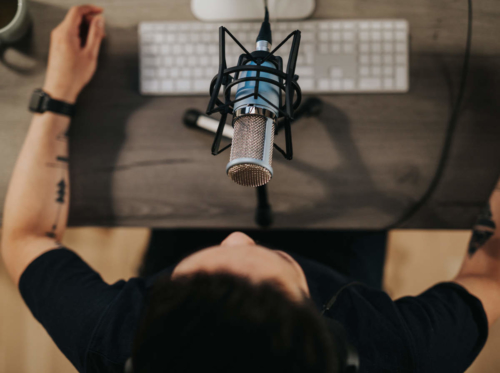How to Win the Next Frontier of Consumer Engagement with At-Home Audio (Part 2)
In Part One of our industry report on at-home audio, we explored how smart speaker proliferation and changing consumer habits during quarantine will reinvent audio. Short summary below:
WHAT’S HAPPENING? COVID quarantine + the smart speaker boom is reinventing at-home audio
HOW will audio formats evolve to fit new consumption environments? Like when video evolved for mobile consumption, the best podcasts for smart speakers will master the art of “content density” — delighting users with the right content at the right time, for the right amount of time.
WHAT are the 3 core pillars of effective at-home audio?
-
Habitual / Routine-Based
-
High “Content Density”
-
Personalized / Adaptive / Interactive
Today in part 2, we now explore:
-
HOW will at-home audio engage and monetize audiences in new ways?
-
WHY the time to figure out your at-home audio strategy is now
HOW Will At-Home Audio Engage and Monetization Audiences in New Ways?
Sticky Brand Routines
The best brand marketers aren’t always selling. They’re forming ongoing relationships with fans and users. Engaging them on a daily basis. Betting that if the brand is there for consumers beyond the point of purchase — providing a source product education, community, and lifestyle — then that brand will be the obvious choice when it’s time to make the purchase.
The routine-based application of smart speaker microcasts will enable brands and publishers to monetize this medium, not through promotional ad reads, but through forming sticky consumer bonds.
Gimlet already produces a minute-long branded microcast by Oral B, meant to be listened to while brushing your teeth. We expect to see much more of this. Similarly, Listen, Rinse, Repeat is a 20-second microcast meant to be listened to while washing your hands (it’s not sponsored by a soap company yet but should be). Will Dollar Shave Club and Harry’s extend their digital publications (titled MEL and 5’Oclock, respectively) into microcasts to listen to while shaving? Maybe Stitch Fix will adapt its branded podcast (called Wear It’s At) into a microcast that helps style you when getting dressed in the morning. Casper can adapt it’s Sleep Channel to smart speakers to make it more adaptive to the user’s sleep habits. Motherly or Coterie may develop a microcast for parents to listen to while changing diapers. This model can be replicated by countless categories.
Commerce, Flash Sales, and Product Drops
Outside of developing sticky consumer relationships, brands can also monetize at-home audio via shoppable microcasts. For example, voice commands can be integrated into the brands’ microcast concepts above: like if you run out of toothpaste during your episode of Chompers, you tell your microcast, and it’ll send you a new tube of Oral B. And the microcast can remind you when it’s time to replace your brush. This will be all especially seamless on Alexa devices considering Amazon’s e-commerce infrastructure. Two-way interactions can occur seamlessly during a produced format. It has yet to be developed, but it will happen.
Another application of shoppable microcasts will be a short-form audio version of livestream shopping, an exploding sector that will generate $129 billion of commerce revenue this year in China.
Smart speakers can be an incredibly effective conduit for time-constricted commerce. We may see microcasts either by brands, creators, or retailers — with personalized daily deals. Daily microcasts that promote an exclusive discount or product “drop” that expires 10 minutes after listening. Like Pinduoduo, they could use gamification features to incentivize daily check-ins, making the daily drop a part of your routine. Or it could use the smart speaker’s AI functionality to personalize both the timing of the drop, and the product itself, to best entice and delight each user.
Will we see a daily NTWRK dropcast? Or will Amazon integrate its Amazon Live platform and its customer data with its Alexa product to best integrate product offers into your daily routine?
Food & Cooking
One of the sectors that has been most dramatically affected by the COVID-induced “at-homification of everything” is the Food & Beverage business. We’ve written about this before (part 1 and 2).
With more people eating at home, and cooking, than ever before, there’s a tremendous opportunity to elevate a kitchen-based smart speaker into a valuable ally for consumers and brands. Food Network has already partnered with Amazon on a shoppable “view and do” subscription streaming app, “Food Network Kitchen”, which features interactive cooking classes with popular Food Network personalities that fans can cook along with at home. Amazon powers the shoppable integrations, enabling viewers to order the ingredients for 80,000+ featured recipes directly through the app.
We expect to see an audio version of this adapted to smart speaker functionality, and we’d be surprised if they’re not already working on it.
Live Sports Companion Content
We wrote about the potential for audio as companion content to live sports viewership in a recent report: With podcasting and video, it’s not either or. They’re highly compatible. For example, fans can still watch the game on TV or new social video platforms like Twitch, mute the audio, and then play a live podcast with the commentators they prefer. This aligns with the growing trend of personalization in the fan content experience.
Similarly, smart speakers can be programmed to function as a viewing companion to help viewers get the most out of the game via interactive verbal overlays.
For example, the NFL and Amazon recently partnered to develop a voice assistant called “The Rookie’s Guide to the NFL”, which is programmed to answer a variety of questions a new viewer might have while watching an NFL game (e.g. “What’s pass interference?”). This tool can be applied to fans of all experience levels. eSports-esque graphic overlays are being integrated into digital sports broadcasts to make the video streams more personalized, interactive, and engaging — why can’t the power of smart audio also be harnessed to add this dimension to the viewing experience?
Education
The “at-homification” of the education sector has been among the most dramatically accelerated transformations we’ve observed during the COVID crisis.
Outside of enterprise software empowering educators and students at all levels to resume their curriculums on a remote basis, the biggest boom we’ve seen in the space has been at the consumer level. People are at home and they want to use that time productively by learning a new skill. Coursera and Masterclass’ recent valuations at $2.3 billion and $800 million, respectively, validate the power of this emerging market.
Knowable, an audio-based e-learning platform that raised a $4 million seed round last year led by Andreessen Horowitz, recently pivoted to a $9.99 per month subscription model. Great validation for the audio learning space. Warren Shaeffer, the company’s CEO and Co-Founder, told us his thoughts on the potential of smart speakers to transform this growing space:
“I do think education will be a powerful channel for audio and voice. We see a world where someone can tell their speaker ‘teach me about raising venture capital in 60 minutes’ and they receive personalized and interactive info that’s audio-first, though not necessarily audio-only”
Learning a new skill — whether it’s a language, an instrument, an artform, or a craft — is a matter of consistent practice. Establishing a routine and sticking to it. As well as tailoring it over time around your personal circumstances like schedule, goals, etc. As we’ve discussed, microcasts thrive on adaptive routines. Duolingo’s Spanish Podcast has 39 million unique downloads and although its app has over 300 million active users, less than 2.5% subscribe to its premium product. A Duolingo microcast programmed for smart speakers could not only function as a top-of-funnel engagement marketing tool to increase brand stickiness and reduce churn by making it easier for users to cultivate and maintain a daily education habit, but it could also become an omnichannel extension of the premium product itself.
Fitness, Health, and Wellness
It’s fair to say that fitness, health, and wellness is another market that COVID has brought into the home:
-
63% of consumers say they’ve made an effort to get in better shape during COVID
-
64% say they’re more interested in at-home fitness than they were before COVID
-
70% say they don’t need a gym to keep up with their fitness routines
-
50% say they plan on canceling their gym membership altogether
As a result, many video-based at-home-fitness products have exploded in popularity during this period. For example, Lululemon acquired Mirror for $500M, Peloton’s stock has grown by 350% in 2020, and a creator-driven home fitness app called Playbook just raised a $9.3 million Series A). However, as we’ve learned from the success of the Nike Run Club app, Headspace, or Calm, not all health and wellness routines require a video component. In addition to audio instructions, immersive soundscapes could be a powerful tool to augment workouts or wellness routines.
The best health and wellness routines are like the best smart speaker podcasts — driven by consistent routine, yet perpetually adapting and evolving to become more optimized and personalized for the user (see: Whoop’s recent $1.2 billion valuation). Whether it’s HIT classes, dietary and nutritional feedback, meditation, or sleep optimization, there’s a definitive opportunity for smart audio to capture a chunk of the at-home fitness, health, and wellness market.
Serialized Storytelling
Most of the applications for at-home audio that we’ve discussed have been around optimizing at-home routines. But like traditional podcasting, there’s also room for in this emerging medium for premium storytelling. We believe the opportunity lies in serialized storytelling “drops” — episodic microcasts that keep us on the edge of our seats each day as we get ready for work or cook dinner, leaving us on a cliffhanger until the next episode drops tomorrow.
Before you yell “But Quibi!” at your computer screen, allow me to preemptively counter with an example in support of this storytelling model: Radish Fiction, a mobile fiction platform for serialized e-book storytelling. The company’s founder explains,
“Using a data-driven production, we figure out what you want by testing covers, titles and pilots, and when we figure out what readers engage with, we give that to them fast…The stories are ongoing and are constantly updated. We are focusing on the behavior of binging content”.
The result? Radish’s revenues have grown by TWENTY FIVE TIMES over the past year, with $100,000 in daily revenue and 50 million cumulative reads. It’s therefore not surprising that the company raised a $63 million Series A in August in support of continued growth. Smart speaker microcasts would be the perfect medium through which to extend this inventive model.
WHY the Time to Figure Out Your At-Home Audio Strategy is Now
There are countless other sectors and use cases where at-home audio innovation can delight and monetize audiences. It’s very much early days here.
And although these new audio formats and business models will emerge from the smart speaker boom, they won’t be confined to these smart devices. We expect smart speakers to function as an incubator for these new approaches to audio and interactive consumer engagement. The most successful format experiments like microcasts will eventually expand out of the home, into mobile apps, and more. Additionally, smart speaker manufacturers are beginning to incorporate video display screens into their products, which will add another dimension that we expect to broaden applications of this emerging medium over time.
So — whether you’re a creator, publisher, brand, or retailer — have you thought about what your at-home audio strategy will be in 2021?
We always advise our clients to follow the audience. And the audience is buying smart speakers.
Smart speakers are the next frontier for consumer attention. But unlike comparable devices like cell phones, connected TV’s, tablets, or even OOH screens, this battlefield is still relatively empty with regards to programming and business partnerships.
Meaning this is an exciting opportunity to get in at the ground floor of a new medium.
Right now, the out-of-home podcast market is continuing to grow, and everyone is battling for a piece of it. And rightfully so. It’s a lucrative and fast-growing industry that’s still in its early innings. But it’s competitive. Easy to break in, hard to stand out.
Meanwhile, the at-home audio market is there for the taking. Creators and brands are waking up to this reality and they’re quickly deploying resources towards this emerging vertical. But winning this next frontier won’t be easy. Publishers will need to optimize content density, as well as AI and brand integrations, in order to develop programming that consumers actually want to invite into their daily routines.
With so many innovative applications possible, there are many paths to success through at-home audio. So dive in. Experiment, learn, iterate. If out-of-home audio is still in the early innings, then at-home audio is doing pregame stretches. But as we’ve learned from podcasts and mobile video, markets get crowded fast, so you better get in the game.
—
Ping us here at anytime. We love to hear from our readers.



